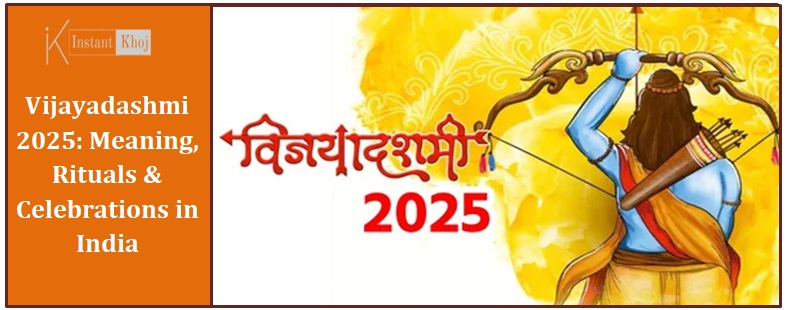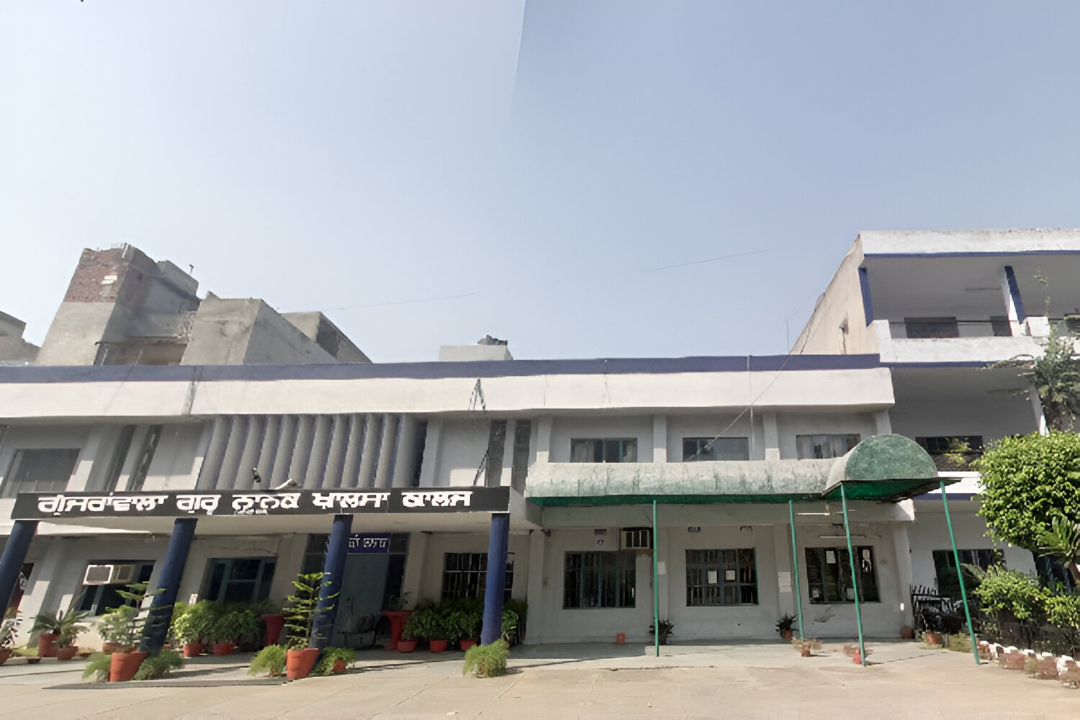Vijayadashmi, also popularly known as Dussehra, is one of the grandest and most significant Hindu festivals celebrated across India. Marking the victory of good over evil, the festival holds deep mythological, cultural, and spiritual importance. Celebrated on the 10th day of the Hindu lunar month of Ashwin, Vijayadashmi in 2025 falls on the 2nd of October, coinciding with Gandhi Jayanti, a national holiday in India.
What is Vijayadashmi?
The word “Vijayadashmi” comes from two Sanskrit words: “Vijaya” meaning victory, and “Dashmi” referring to the 10th day of the lunar fortnight. It symbolizes the victory of righteousness over wrongdoing. This victory is celebrated in two major mythological contexts:
-
Lord Rama’s Victory Over Ravana: According to the epic Ramayana, Lord Rama defeated the ten-headed demon king Ravana on this day, rescuing his wife Sita and restoring dharma (righteousness).
-
Goddess Durga’s Triumph Over Mahishasura: In some regions, the festival commemorates Goddess Durga’s victory over the buffalo demon Mahishasura after a fierce nine-day battle, symbolizing the power of feminine divinity.
Both stories reinforce the theme of good triumphing over evil and inspire people to uphold righteousness in their own lives.
When is Vijayadashmi Celebrated?
Vijayadashmi is celebrated on the 10th day (Dashmi) of the bright half (Shukla Paksha) of the Ashwin month in the Hindu calendar, usually falling in September or October. In 2025, the festival falls on Thursday, 2nd October.
Since the festival’s date is determined by the lunar calendar, it varies every year when translated to the Gregorian calendar.
How is Vijayadashmi Celebrated?
The celebration of Vijayadashmi is preceded by Navaratri, a nine-night festival dedicated to Goddess Durga. These nine days of fasting, prayer, and dance culminate in Vijayadashmi, marking the day when evil is vanquished.
Rituals and Traditions
-
Burning Effigies of Ravana: In many parts of North India, especially in cities like Delhi, Varanasi, and Jaipur, giant effigies of Ravana, his brother Kumbhakarna, and son Meghnad are set ablaze with fireworks. This symbolic act represents the destruction of evil forces.
-
Ram Leela Performances: Dramatized enactments of the Ramayana, called Ram Leela, are performed in open grounds, telling the story of Lord Rama’s journey and the eventual victory over Ravana.
-
Worship of Weapons (Ayudha Puja): In South India and parts of Maharashtra and Karnataka, people perform Ayudha Puja, where they clean and worship their tools, weapons, vehicles, and instruments, seeking blessings for success in their endeavors.
-
Durga Visarjan (Immersion): In eastern India, especially West Bengal, Vijayadashmi marks the last day of the Durga Puja festival when beautifully crafted idols of Goddess Durga are immersed in rivers or lakes, symbolizing her return to Mount Kailash.
-
Feasting and Gifts: On this day, people prepare special dishes, exchange sweets, and greet each other with joy and warmth.
-
Cultural Programs: Dance, music, and community feasts are common, making the day a festive occasion full of vibrancy.
Where is Vijayadashmi Celebrated Most Grandly in India?
Vijayadashmi is celebrated throughout India with regional variations and unique cultural practices. Here are some places where the festival is particularly grand:
-
Mysore, Karnataka: The Mysore Dussehra is world-famous for its royal procession, grand illuminations, and cultural programs. The city’s historic palace is lit up magnificently, and the procession features decorated elephants, horses, and dancers.
-
Varanasi, Uttar Pradesh: Known for its spiritual significance, Varanasi hosts elaborate Ram Leela performances and the burning of Ravana’s effigies on the ghats of the Ganges, drawing thousands of spectators.
-
Kolkata, West Bengal: Durga Puja festivities culminate on Vijayadashmi with massive immersion processions. The artistic pandals (temporary structures) and decorations are major highlights.
-
Ramlila Maidan, Delhi: The capital hosts large-scale Ram Leela performances, with effigy burning witnessed by large crowds.
-
Kolkata, Assam, and Odisha: These eastern states celebrate Vijayadashmi with great fervor as the culmination of Durga Puja.
-
Tamil Nadu and Andhra Pradesh: Ayudha Puja is a significant ritual here, followed by festive gatherings and worship.
Spiritual Significance and Lessons of Vijayadashmi
Vijayadashmi is not just about celebration but is deeply symbolic of spiritual victory:
-
Triumph of Truth and Righteousness: It reminds us that truth and dharma always prevail over falsehood and adharma.
-
Self-Discipline and Inner Strength: The festival encourages people to conquer their inner evils—anger, greed, ego—and strive for self-improvement.
-
Empowerment of the Divine Feminine: Honoring Goddess Durga, it celebrates the power and courage within each individual to fight negativity.
-
Renewal and New Beginnings: Many start new ventures, buy new tools or vehicles, or begin studies on this day, believing it to be auspicious.
Also Read:
Mahavatar Narsimha OTT Release: Mythological Animated Epic Details
Follow Blog’sonInstantkhoj for more latest stories and trending topics.
Mantras for Vijayadashmi: Invoking Divine Blessings
Chanting mantras on Vijayadashmi helps invoke the blessings of Goddess Durga and Lord Rama, fortifying one’s mind and spirit for victory in all aspects of life. Here are some powerful mantras to recite:
1. Vijayadashmi Durga Mantra
Om Jayanti Mata Bhagavati Mahishasuramardini Shubham Karoti Shubham Bhavatu.
Sarvaduḥkhapraśamanam Devi Narayani Namo’stu Te.
Meaning: Salutations to Mother Durga, the slayer of Mahishasura, who brings auspiciousness and removes all suffering. O Goddess Narayani, we bow to you.
2. Vijayadashmi Rama Mantra
Rama Rameti Rame Rame Manorame.
Sahasranama Tattulyam Ramnama Varanane.
Meaning: Repeating the name of Rama is as powerful as chanting his thousand names. Lord Rama, the best among men, bless us with victory.
3. Durga Gayatri Mantra
Om Katyayanaya Vidmahe Kumari Shubhangaya Dhimahi.
Tanno Durga Prachodayat.
Meaning: We meditate on the divine daughter of Sage Katyayana, the auspicious and radiant Goddess Durga. May she inspire and guide us.
4. Vijayadashmi Shakti Mantra
Om Aim Hreem Kleem Chamundaye Vichche.
Meaning: A powerful mantra invoking Goddess Chamunda (fierce form of Durga) to destroy all evils and grant victory.
5. Mahamrityunjaya Mantra
Om Tryambakam Yajamahe Sugandhim Pushtivardhanam.
Urvarukamiva Bandhanan Mrityor Mukshiya Maamritat.
Meaning: We worship the three-eyed Lord Shiva who nourishes and protects us. May he free us from the bondage of death and grant us immortality.
Frequently Asked Questions (FAQ)
1. Why is Vijayadashmi celebrated on the 10th day?
Vijayadashmi is celebrated on the 10th day of Ashwin’s bright half because it marks the day Lord Rama defeated Ravana and Goddess Durga killed Mahishasura, symbolizing victory of good over evil.
2. Is Vijayadashmi the same as Dussehra?
Yes, Vijayadashmi and Dussehra are different names for the same festival. “Dussehra” means the defeat (hara) of the ten (dasha) heads of Ravana.
3. How do different parts of India celebrate Vijayadashmi?
-
North India: Burning of Ravana effigies and Ram Leela performances.
-
South India: Ayudha Puja and worship of tools.
-
East India: Culmination of Durga Puja with idol immersion.
-
West India: Fairs, cultural events, and worship.
4. Is Vijayadashmi celebrated on the same day every year?
No, it follows the Hindu lunar calendar and changes every year on the Gregorian calendar, usually between September and October.
5. What is the significance of Ayudha Puja?
Ayudha Puja is the ritual of worshipping tools, weapons, and instruments to honor the divine power behind skills and labor, seeking blessings for success.
6. Can Vijayadashmi be a good day to start new ventures?
Yes, Vijayadashmi is considered an auspicious day for starting new projects, businesses, or educational pursuits.
Conclusion
Vijayadashmi 2025, celebrated on 2nd October, is a festival that transcends religious boundaries, uniting millions in the celebration of victory, courage, and righteousness. Whether through the fiery effigies of Ravana, the worship of divine weapons, or the joyous immersion of Goddess Durga idols, the festival inspires us to embrace truth, goodness, and hope.
As the vibrant festivities unfold across India, Vijayadashmi reminds us all to overcome darkness with light, evil with good, and despair with hope — a timeless message that remains relevant in today’s world.
Also Read:
Mahavatar Narsimha OTT Release: Mythological Animated Epic Details
Follow Blog’sonInstantkhoj for more latest stories and trending topics.




